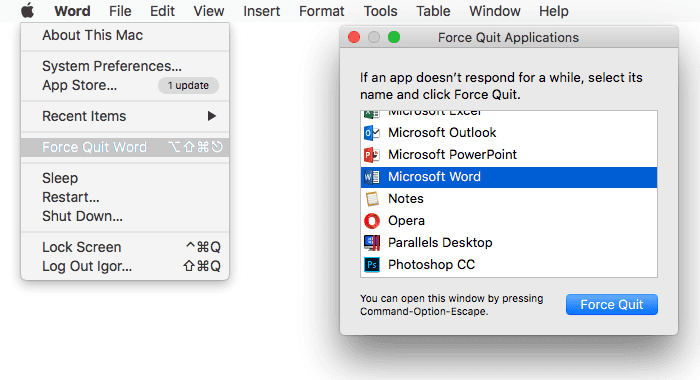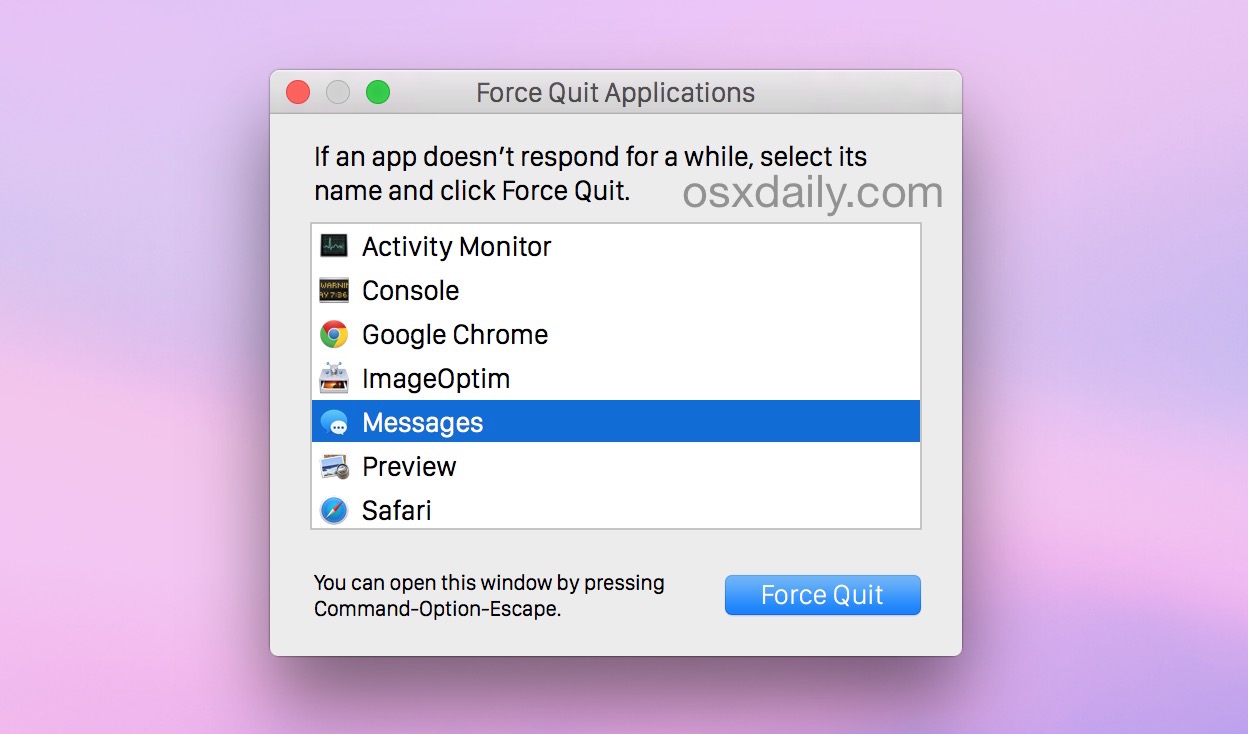For Macbook Pro Type C accessories : First Take Advantage of 50% Off discount on Indiegogo here!
Usually, open a app you will open a window on your MacBook. Some programs even let you open new windows on the fly; the following illustrates a window in its purest form: a new Finder window. To display this window on your own MacBook, choose File→New Finder Window or press Command+N. From here, you can reach any file on your MacBook or even venture to the Internet.
How To Close Keyboard Java
- 1) Use a Keyboard Shortcut for “Force Quit Applications” on Mac Starting with one of the best and easiest is the system wide Force Quit function: Hit Command+Option+Escape from anywhere to bring up the simple “Force Quit Applications” window, then click on the app name to select, followed by clicking the “Force Quit” button, this will end the app immediately.
- 10 incredibly useful Mac keyboard shortcuts you should be using. You’ll get a window that says Force Quit Applications and you can choose which app you want to close from there.
4 ways to Force Quit an app on your Mac. Keyboard shortcut. To do so, highlight the app you want to close, click the X button in the upper-left corner of the Activity Monitor window.
When you’re finished with a document or you no longer need a window open, you can close it to free that space on your Desktop. To close a window in Mac OS X, move your pointer over the Close button; it’s the red circular button at the top-left corner of the window. An X appears on the button when you’re in the zone. When the X appears, just tap the trackpad.
Sometimes we need to do something else in a hurry. We want to close all of the apps for a few seconds. If your computer have been used many years, you may encounter the app can not be closed very smoothly! So there are some ways to force closing your computer.
OS X has his own special window to handling apps that need to be force quit. You can access this window two ways, first, by clicking the Apple logo in the Menu Bar and selecting Force Quit. Or, you can bring up this same window by using the keyboard shortcut Command-Option-Escape. The window will display all running applications, and identify with red text any apps that are “not responding.” Just highlight an app and click the Force Quit button to quit it. As mentioned above, there’s no warning when you force quit an app, so be careful as you make your selection.
How To Close Apps On Mac With Keyboard Keys

There is another way, you can directly force quit apps via a keyboard shortcut, without any other steps. This may be the best and most obvious method. But using the keyboard shortcut below will immediately force quit the active, or foremost, application. The problem is that it’s very easy to lose track of which app is active, especially when dealing one or more frozen or unresponsive apps. Therefore, this method is the most risky from a data loss perspective, as it’s far more likely that a user will make a mistake and inadvertently force quit the wrong app.
How To Close Apps On Mac With Keyboard Shortcuts
But, as long as you understand this risk and are careful, this force quit shortcut is the fastest method. To use it, make sure the frozen app is active and press and hold Command-Option-Shift-Escape (you’ll notice that this is simply the Force Quit Window shortcut with the Shift key modifier thrown in). As with other force quit methods, the active application will immediately be force quit.
How To Close Apps On Mac With Keyboard Ipad
Sometimes hardware issues or major OS X bugs cause so much instability that the only way to get your Mac up and running again is to reboot. Absent those relatively rare circumstances, however, you should be easily able to control any frozen or misbehaving apps by force quitting them via one of the methods above. Just be sure to save your work when possible, and double-check your steps to avoid quitting the wrong app.

All of us know, Forcing closes apps which is bad for our Macbook. If we have enough time to close our computer. Please close it one by one!
Notes User Guide
Here are shortcuts you can use, in addition to those that appear in Notes menus.
How To Close Apps Windows 10
General
Action | Shortcut |
|---|---|
Command-N | |
Duplicate a note | Command-D |
Shift-Command-N | |
Show or hide folders | Option-Command-S |
Show the main Notes window | Command-0 (zero) Note: This shortcut is useful if a note open in a separate window is blocking the main Notes window. |
Show notes in a list | Command-1 |
Show notes in gallery view | Command-2 |
Show attachments | Command-3 |
Option-Command-F | |
Move between the sidebar, notes list, and search field | Tab Note: This shortcut doesn’t work if you are currently editing a note’s contents. |
Begin typing in the note selected in the notes list or gallery view | Return Note: This shortcut places the insertion point at the end of the selected note’s contents. To go back to the notes list, press Command-Return. |
Print a note | Command-P |
Edit notes
How To Close A Tab Using Keyboard
Action | Shortcut |
|---|---|
Shift-Command-A | |
Command-K | |
Option-Command-T | |
Apply Title format | Shift-Command-T |
Apply Heading format | Shift-Command-H |
Apply Subheading format | Shift-Command-J |
Apply Body format | Shift-Command-B |
Apply Monospaced format | Shift-Command-M |
Apply Bulleted List format | Shift-Command-7 |
Apply Dashed List format | Shift-Command-8 |
Apply Numbered List format | Shift-Command-9 |
Apply Checklist format | Shift-Command-L |
Increase font size | Command-Plus sign |
Decrease font size | Command-Minus sign |
Increase list level | Command-] or Tab |
Decrease list level | Command-[ or Shift-Tab |
Add a line break (soft return) to a list item or checklist | Control-Return |
Insert a tab character in a list item | Option-Tab |
Mark or unmark a checklist item | Shift-Command-U |
Move a list or checklist item up in the list | Control-Command-Up Arrow |
Move a list or checklist item down in the list | Control-Command-Down Arrow |
Zoom in on note’s contents | Shift-Command-> |
Zoom out on note’s contents | Shift-Command-< |
Change size of note’s contents to default | Shift-Command-0 (zero) |
Navigate in tables
How To Close Apps On Mac With Keyboard

Action | Shortcut |
|---|---|
Move down one row or add a new row at the bottom of the table | Return |
Move up one row, or above the table when you’re in the first row | Shift-Return |
Add a new paragraph in a cell | Option-Return |
Add a new row above the current row | Option-Command-Up Arrow |
Add a new row below the current row | Option-Command-Down Arrow |
Add a new column to the right of the current column | Option-Command-Right Arrow |
Add a new column to the left of the current column | Option-Command-Left Arrow |
Move to the next cell to the right | Tab |
Move to the next cell to the left | Shift-Tab |
Add a tab character in a cell | Option-Tab |
Select a range of cells in a row | Shift-Left Arrow or Shift-Right Arrow |
Select a range of cells in a column | Shift-Up Arrow or Shift-Down Arrow |
Select the content of the current cell | Command-A Note: If your cursor isn’t in the table and you press Command-A, the contents of the entire note are selected. |
Select the entire table | Command-A, Command-A Note: If your cursor isn’t in the table and you press Command-A, the contents of the entire note are selected. |